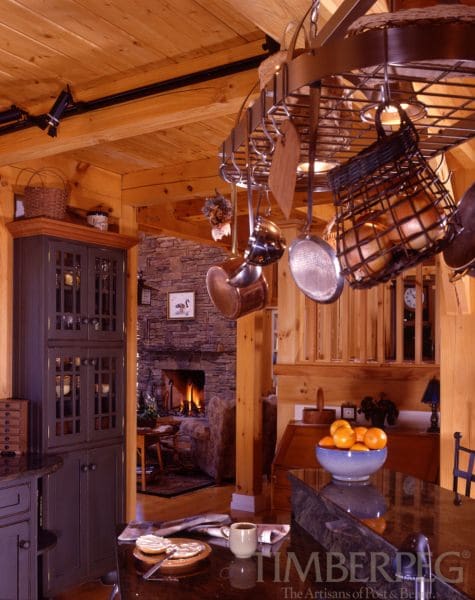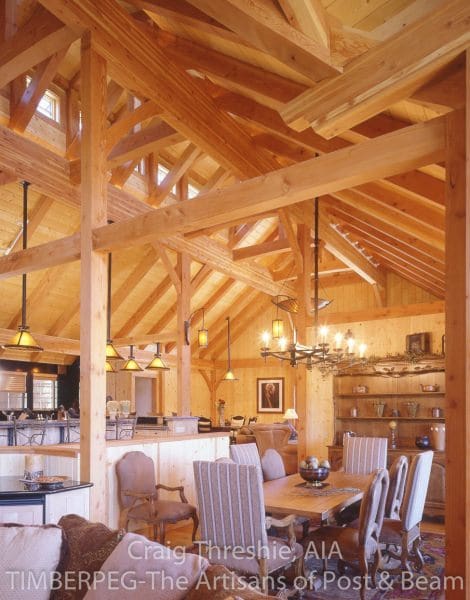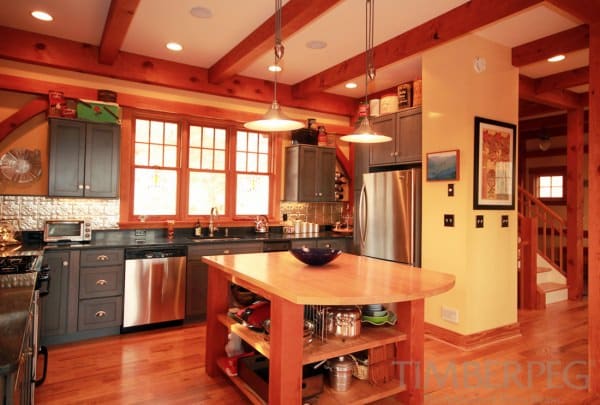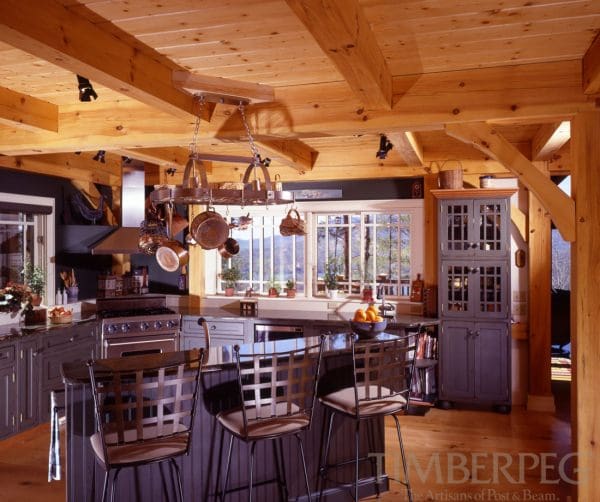If you look around a timber frame home’s kitchen, you will frequently find copper pots and pans on display. There is something about copper’s timeless nature that makes it fit just right in the post and beam home. Beyond aesthetics, copper cookware has several advantages and drawbacks in actual use. Here are some of the main features of copper cookware.
Copper has the highest thermal conductivity of all the elements, save for silver which is impractical to use in cookware. In fact, it has almost twice the conductivity of aluminum, the next common material for cookware. This means that copper heats up very fast and spreads the heat evenly throughout the pan or pot, which is very advantageous when cooking.

Given its wondrous appearance, most homeowners want to keep their copper cookware out in the open for all to see. Copper cannot be cleaned in the dishwasher, but handwashing is easier than most other materials. One downside on the appearance front is that copper is a soft metal and will ding easily. For some, this will only add to the character of the piece, but if you want your cookware to always look pristine then copper may not be for you.

Another great thing about using copper cookware is you needn’t hide it away in cabinets. It looks beautiful displayed on a hutch or can even be used as a table centerpiece.
Copper is a reactive metal, so unlike stainless steel it can interact with your food. Acidic foods should be avoided, since these are the most likely to cause copper to leach into the food. In other applications, this effect is appreciated. For example, when making meringue, the copper denatures the proteins in the eggs which creates tighter bonds and allows the meringue to more easily form the proper structure.

The copper pot and canister under this center island are easily accessible when needed and still look great when stored.
Another major downside to copper is its cost. Since copper is a soft metal, the cookware needs to be made with a great deal of copper leading to a heavy pot or pan. This also means that, given the high price of copper, that copper cookware will be the most expensive pieces in your cookware collection.

There is nothing more cozy than a copper tea-kettle steaming on the stove.
For general cooking duty, a copper-clad piece may be a more appropriate choice. This type of cookware sandwiches a copper layer between stainless steel layers. This makes the overall piece easy to clean and use, while the copper layer helps to evenly distribute heat throughout the pan. Copper-clad cookware is almost always usable with induction stovetops as well, unlike copper cookware. While they are premium pieces of cookware, they are still substantially cheaper than all-copper pieces.

We hope this guide to copper cookware has helped you decide whether it deserves a place in your kitchen. If you need a timber-framed kitchen to help showcase your copper cookware collection, please contact us today.

